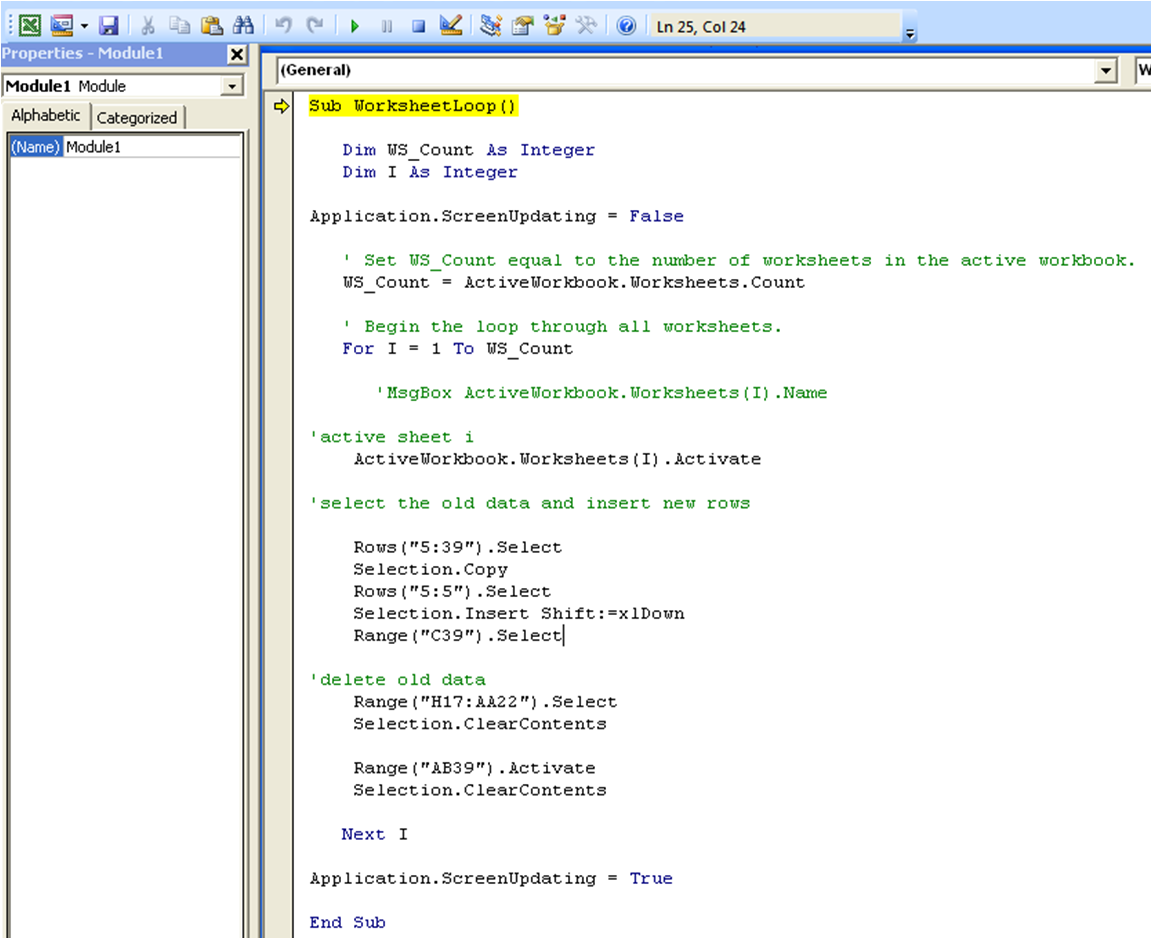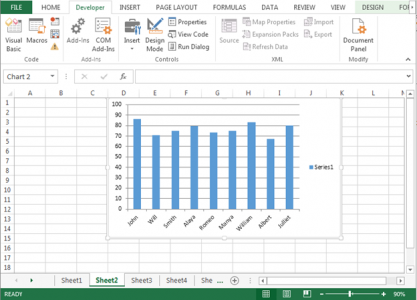
Cycling through worksheets in VBA is a crucial task for any Excel developer or power user. Being able to efficiently and programmatically navigate through worksheets can save time and enhance productivity. In this article, we will explore five different methods to cycle through worksheets in VBA.
Why Cycle Through Worksheets?
Before diving into the methods, let's first explore the reasons why cycling through worksheets is important. In many cases, Excel workbooks contain multiple worksheets that hold different data or information. Being able to cycle through these worksheets allows you to:
- Automate tasks that involve updating or formatting multiple worksheets
- Retrieve data from multiple worksheets and consolidate it into a single worksheet
- Apply a set of formatting or layout changes to multiple worksheets at once
Method 1: Using the For Each Loop
One of the most common methods to cycle through worksheets is by using the For Each loop. This loop allows you to iterate through each worksheet in a workbook and perform a set of actions on each one.
Sub CycleThroughWorksheets()
Dim ws As Worksheet
For Each ws In ThisWorkbook.Worksheets
' Perform actions on each worksheet here
MsgBox ws.Name
Next ws
End Sub
In this example, the code uses the For Each loop to iterate through each worksheet in the active workbook. The ws variable represents the current worksheet being processed, and you can access its properties and methods using the dot notation (e.g., ws.Name).
Method 2: Using the For Next Loop with Index
Another method to cycle through worksheets is by using the For Next loop with an index variable. This method allows you to iterate through each worksheet in a workbook and access its index number.
Sub CycleThroughWorksheets()
Dim i As Integer
For i = 1 To ThisWorkbook.Worksheets.Count
' Perform actions on each worksheet here
MsgBox ThisWorkbook.Worksheets(i).Name
Next i
End Sub
In this example, the code uses the For Next loop to iterate through each worksheet in the active workbook. The i variable represents the index number of the current worksheet being processed, and you can access its properties and methods using the Worksheets(i) notation.
Method 3: Using the For Next Loop with a Worksheet Object
You can also cycle through worksheets by using the For Next loop with a worksheet object. This method allows you to iterate through each worksheet in a workbook and access its properties and methods.
Sub CycleThroughWorksheets()
Dim ws As Worksheet
Dim i As Integer
For i = 1 To ThisWorkbook.Worksheets.Count
Set ws = ThisWorkbook.Worksheets(i)
' Perform actions on each worksheet here
MsgBox ws.Name
Next i
End Sub
In this example, the code uses the For Next loop to iterate through each worksheet in the active workbook. The ws variable represents the current worksheet being processed, and you can access its properties and methods using the dot notation (e.g., ws.Name).
Method 4: Using the For Each Loop with a Worksheet Object
You can also cycle through worksheets by using the For Each loop with a worksheet object. This method allows you to iterate through each worksheet in a workbook and access its properties and methods.
Sub CycleThroughWorksheets()
Dim ws As Worksheet
For Each ws In ThisWorkbook.Worksheets
' Perform actions on each worksheet here
MsgBox ws.Name
Next ws
End Sub
This method is similar to Method 1, but it uses a worksheet object instead of the ThisWorkbook.Worksheets collection.
Method 5: Using the ActiveWorkbook.Worksheets Collection
You can also cycle through worksheets by using the ActiveWorkbook.Worksheets collection. This method allows you to iterate through each worksheet in the active workbook and access its properties and methods.
Sub CycleThroughWorksheets()
Dim ws As Worksheet
For Each ws In ActiveWorkbook.Worksheets
' Perform actions on each worksheet here
MsgBox ws.Name
Next ws
End Sub
In this example, the code uses the ActiveWorkbook.Worksheets collection to iterate through each worksheet in the active workbook. The ws variable represents the current worksheet being processed, and you can access its properties and methods using the dot notation (e.g., ws.Name).

Conclusion
Cycling through worksheets in VBA is an essential task for any Excel developer or power user. In this article, we explored five different methods to cycle through worksheets, including using the For Each loop, the For Next loop with an index, the For Next loop with a worksheet object, and the ActiveWorkbook.Worksheets collection. By mastering these methods, you can automate tasks, retrieve data, and apply formatting changes to multiple worksheets at once.
Gallery of VBA Worksheet Loop Examples




FAQs
How do I cycle through worksheets in VBA?
+You can cycle through worksheets in VBA by using the For Each loop, the For Next loop with an index, the For Next loop with a worksheet object, or the ActiveWorkbook.Worksheets collection.
What is the difference between the For Each loop and the For Next loop?
+The For Each loop iterates through each worksheet in a workbook, while the For Next loop iterates through each worksheet using an index variable.
How do I access the properties and methods of a worksheet in VBA?
+You can access the properties and methods of a worksheet in VBA by using the dot notation (e.g., ws.Name).











